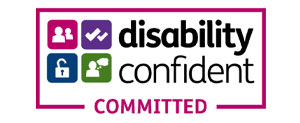Mastering the Chair and Chief Executive Partnership: Insights from Our Latest Webinar
We recently hosted the second session in our Aspiring Chief Executives webinar series, focusing on a crucial theme for any leader entering the charity sector: Mastering the Chair and Chief Partnership. The session, led by our own Louise Beales, Prinicpal Consultant, and special guest Ciara Eastell, an experienced charity CEO, Chair, and coach, both provided a wealth of practical advice for those stepping into executive roles, especially within non-profit and charitable organisations.
Why the Chair-CEO Relationship Really Matters
Ciara began by highlighting the pivotal nature of the relationship between the Chair and CEO, noting that it sets the tone not only for the organisation’s culture, but also for its strategic direction, governance, and accountability. A well-functioning partnership benefits the entire charity, fostering a positive environment, good governance, and healthy leadership. Conversely, she reminded us, a dysfunctional relationship at this level has the potential to create widespread confusion, risk, and negative impacts throughout the organisation.
Understanding Roles, Responsibilities, and Boundaries
A core part of the discussion centred on clarifying boundaries. The Chair’s primary focus is governance, leading the board, facilitating good decision-making, ensuring that the board dynamic is healthy, and providing support and constructive challenge to the CEO. The CEO, in turn, leads the organisation on a day-to-day basis, implements the strategy, and manages operations. Ciara emphasised that certain responsibilities, such as strategic vision and organisational culture are best approached as shared endeavours.
Ciara also pointed out that role confusion can quickly lead to difficulty, particularly when Chairs overstep into operational matters or, conversely, when CEOs dominate, eclipsing proper board oversight. Regular, open conversations about these boundaries are essential, especially in periods of challenge or change.
Common Pitfalls (and How to Avoid Them)
Through thoughtful examples and personal reflection, there were several common challenges faced in the Chair-CEO relationship raised:
- Blurring of boundaries: Chairs becoming over-involved, especially during crises or financial instability, or CEOs overshadowing the board’s strategic role.
- Lack of regular communication: Distant or disengaged Chairs can leave CEOs feeling isolated and unsupported; similarly, unaddressed conflict can breed mistrust.
- Strategic misalignment: Disagreement on future direction or approach to risk can undermine effectiveness if not addressed quickly.
- Underperformance and lack of appraisal: Both Chair and CEO benefit from regular performance reviews, but these are often neglected—especially for Chairs.
Strategies for Success: Building Trust, Alignment, and Accountability
There are a host of practical strategies, which generated strong engagement from attendees:
- Regular check-ins: At minimum, a weekly phone or virtual catch-up, complemented by a monthly face-to-face meeting. This helps maintain trust and ensures the Chair is kept in the loop.
- Clearly defined roles: Regularly reviewing and updating role descriptions and responsibilities prevents misunderstandings.
- Joint strategic planning: Both Chair and CEO (with trustees and senior leadership) should co-own the strategy and future direction of the charity.
- Annual appraisals: Both executives and board members should review each other’s performance. External facilitation can be invaluable here.
- Open communication about challenges: No surprises should exist between Chair and CEO, especially when times are tough.
- Championing a feedback culture: Constructive, frequent feedback fosters a high-performing, transparent leadership environment.
Preparing for the CEO Role and Your First 100 Days
For those moving into or interviewing for CEO roles, Ciara stressed the importance of assessing the likely Chair-CEO dynamic, are values and vision aligned, is the Chair engaged and accessible, and what are their expectations around communication? Once in post, setting early habits, transparent goal-setting, agreeing on communication protocols, and taking time to build trust forms the bedrock of a successful partnership.
Modelling Culture from the Top
A vital insight is that the tone between Chair and CEO filters down to the entire organisation. Whether in a small charity or a large, complex non-profit, their collaboration, mutual respect, and transparency are visible and felt, impacting everyone from trustees to frontline staff.
Final Reflections
Throughout the session, one takeaway resonated: mastering the Chair-CEO relationship is not simply a matter of protocol; it is an ongoing investment in the health, direction, and impact of the organisation. If you’re interested in developing your leadership journey further or would like to discuss your next steps, please don’t hesitate to get in touch with us at Starfish Search or, connect with Ciara on LinkedIn for coaching and support. Thank you to everyone who joined us for this insightful session. Stay tuned for more events in our series, as we continue supporting emerging and established leaders across civil society. You can watch the full recording here, and for more information, or to access the full slides, please contact aspiringceo@starfishsearch.com.
Valuable Resources Recommended
Endorsed key sector resources and training for those seeking further development, including:
- Charity Commission guidance on good governance
- The Association of Chief Executives of Voluntary Organisations (ACEVO) and their “Dynamic Duo” workshop for Chair-CEO partnerships
- The Association of Chairs’ guide, A Question of Balance: Chair and Chief Executive Relationships
2025 Budget
We wrote to 400 leaders to ask them for a reaction to last week’s Budget. Here’s what they said.
Funding Crises and the Search for Financially Resilient Leaders
Councils in England are under systemic strain. The Bennett School of Public Policy estimates a collective funding gap of £9.3 billion over the next few years, with most authorities forecast to operate in deficit. Meanwhile, Grant Thornton warns that up to 40% of councils could face financial failure within five years without new income or deeper cuts.
Statutory Officers Under Pressure: Leading in a Fluctuating Political Environment
Statutory officers have always been central to the integrity and stability of local government. Today, their roles are under unprecedented strain. Political volatility, heightened scrutiny, constrained resources, and rising public expectations have created a more complex and demanding environment than ever before.
ACCREDITATIONS


ESPO is a public sector owned professional buying organisation (PBO), specialising in providing a wide range of goods and services to the public sector for over 40 years. Starfish Search has been awarded a place on ESPO’s Strategic HR Services framework (3S). Services we offer under the framework include: Lot 1, Executive and Managerial Interim Recruitment Lot 2, Executive and Managerial Permanent Recruitment.


Starfish are proud to be certified Disability Confident Committed. This scheme provides employers with the knowledge, skills and confidence needed to attract, recruit, retain and develop disabled people in the workplace.


Crown Commercial Service supports the public sector to achieve maximum commercial value when procuring common goods and services. In 2020/21, CCS helped the public sector to achieve commercial benefits equal to £2.04bn - supporting world-class public services that offer best value for taxpayers. Starfish Search has been named as a supplier on Crown Commercial Service’s Executive and Non-Executive recruitment. Services we offer under the framework include: Lot 3 - Non-Executive and Public Appointments.


Bloom, launched in 2012 is the UK’s leading marketplace for professional services. They provide an end-to-end solution for the procurement, contract management and payment of all professional services, via the compliant NEPRO³ framework. Their public sector clients have access to 20 professional services categories and over 4500 accredited suppliers. Bloom provides swift routes to market via either direct award or mini competition. Starfish is an accredited supplier to BLOOM; our services can be accessed via this framework - Executive and Non-Executive Search and Interim Management.
Join the starfish team
We hire people who bring insight, integrity and ambition to their work. If you’re ready to contribute to shaping the future of leadership and you want to explore our current opportunities please click the link below.
find out more